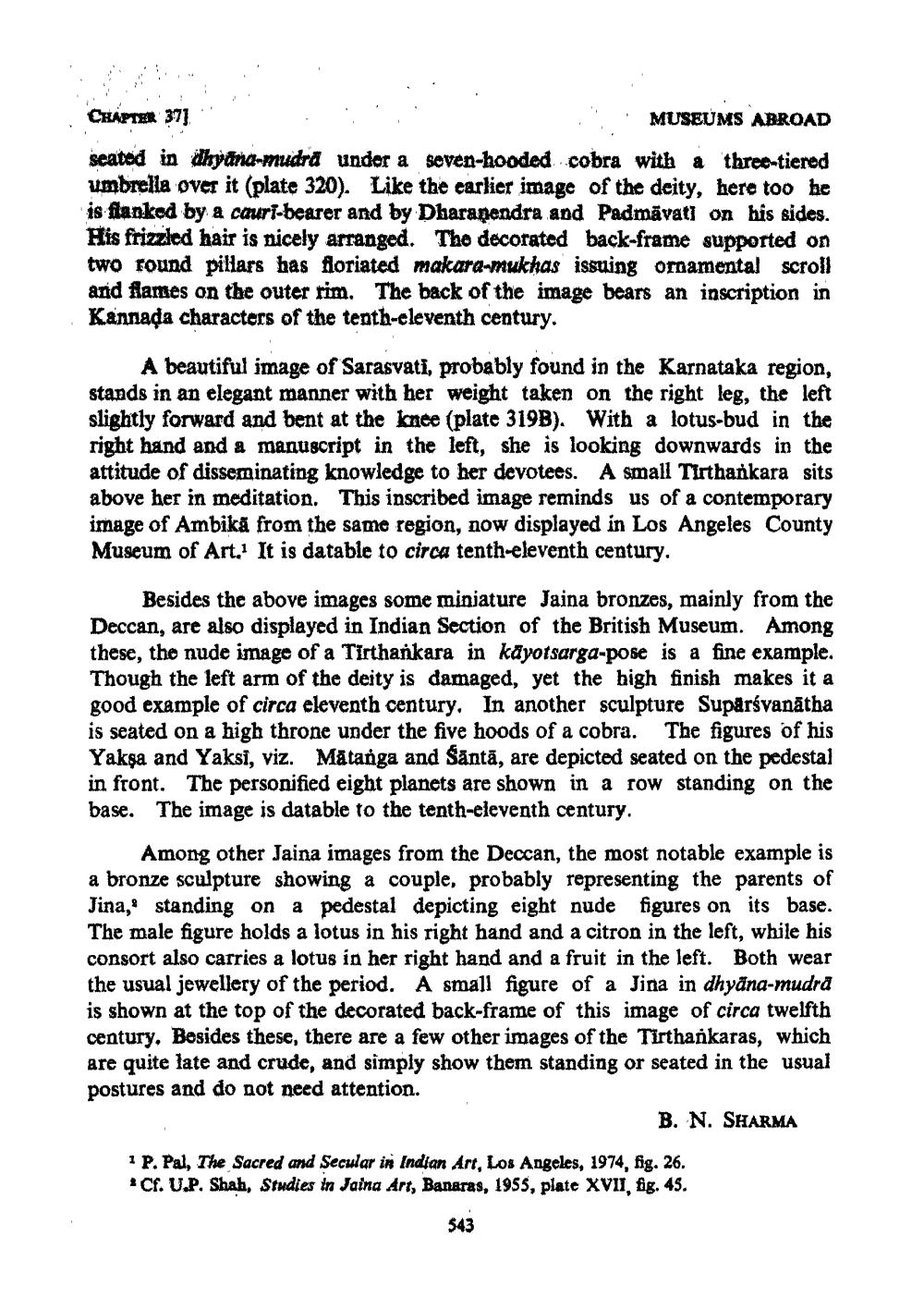________________
CHAPTER 371
MUSEUMS ABROAD seated in dhyana-mudra under a seven-hooded cobra with a three-tiered umbrella over it (plate 320). Like the earlier image of the deity, here too be is flanked by a cauri-bearer and by Dharapendra and Padmavati on his sides. His frizzled hair is nicely arranged. The decorated back-frame supported on two round pilars has floriated makara-mukhas issuing ornamental scroll and flames on the outer rim. The back of the image bears an inscription in Kannada characters of the tenth-eleventh century.
A beautiful image of Sarasvati, probably found in the Karnataka region, stands in an elegant manner with her weight taken on the right leg, the left slightly forward and bent at the knee (plate 319B). With a lotus-bud in the right hand and a manuscript in the left, she is looking downwards in the attitude of disseminating knowledge to her devotees. A small Tirthankara sits above her in meditation. This inscribed image reminds us of a contemporary
nage of Ambikå from the same region, now displayed in Los Angeles County Museum of Art. It is datable to circa tenth-eleventh century.
Besides the above images some miniature Jaina bronzes, mainly from the Deccan, are also displayed in Indian Section of the British Museum. Among these, the nude image of a Tirthankara in kayotsarga-pose is a fine example. Though the left arm of the deity is damaged, yet the high finish makes it a good example of circa eleventh century. In another sculpture Suparsvanātha is seated on a high throne under the five hoods of a cobra. The figures of his Yaksa and Yaksi, viz. Matanga and Santā, are depicted seated on the pedestal in front. The personified eight planets are shown in a row standing on the base. The image is datable to the tenth-eleventh century.
Among other Jaina images from the Deccan, the most notable example is a bronze sculpture showing a couple, probably representing the parents of Jina, standing on a pedestal depicting eight nude figures on its base. The male figure holds a lotus in his right hand and a citron in the left, while his consort also carries a lotus in her right hand and a fruit in the left. Both wear the usual jewellery of the period. A small figure of a Jina in dhyana-mudra is shown at the top of the decorated back-frame of this image of circa twelfth century. Besides these, there are a few other images of the Tirthankaras, which are quite late and crude, and simply show them standing or seated in the usual postures and do not need attention.
B. N. SHARMA
1 P. Pal, The Sacred and Secular in Indian Art, Los Angeles, 1974, fig. 26. *Cf. U.P. Shah, Studies in Jaina Art, Banaras, 1955, plate XVII, fig. 45.
543




